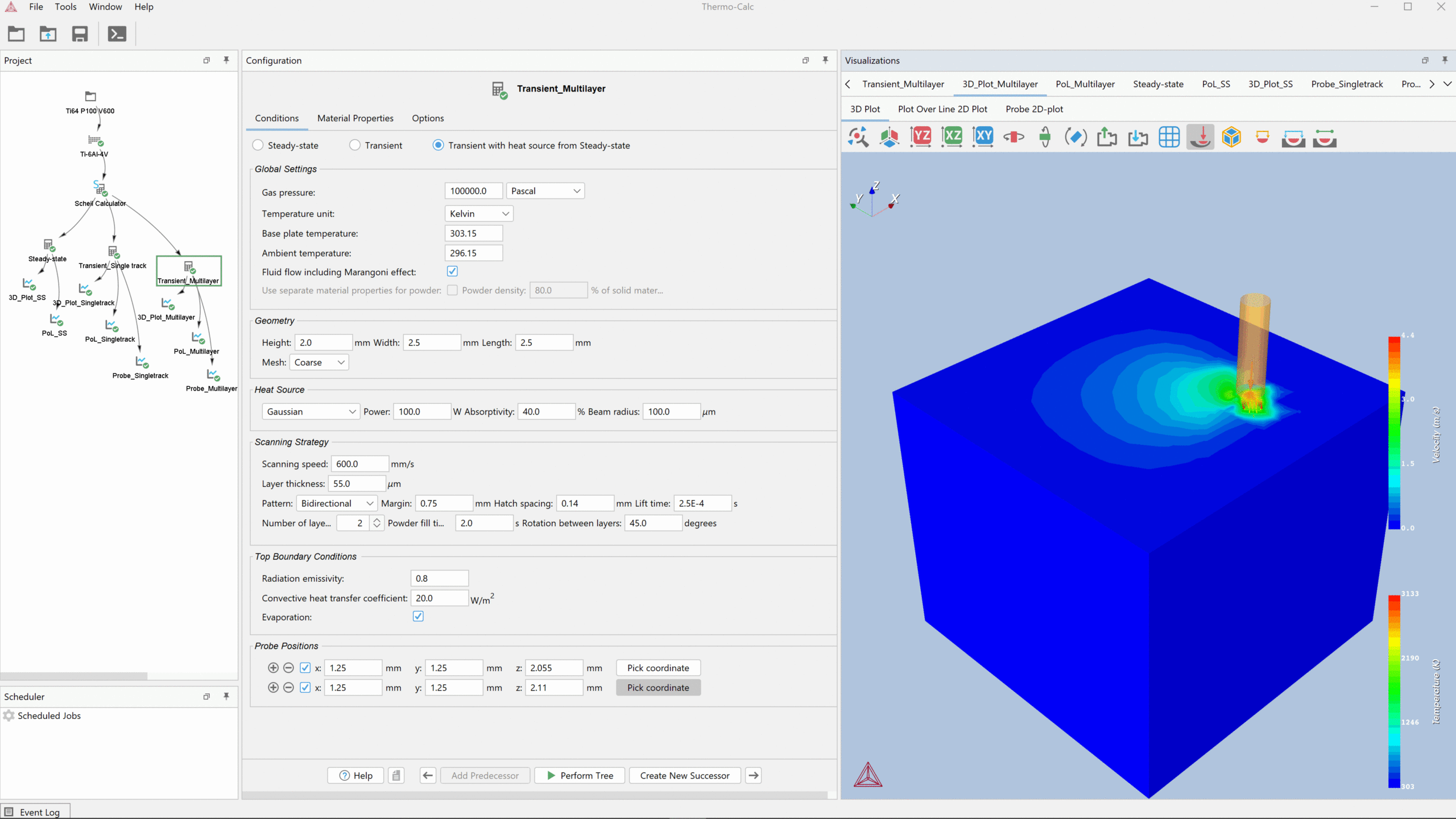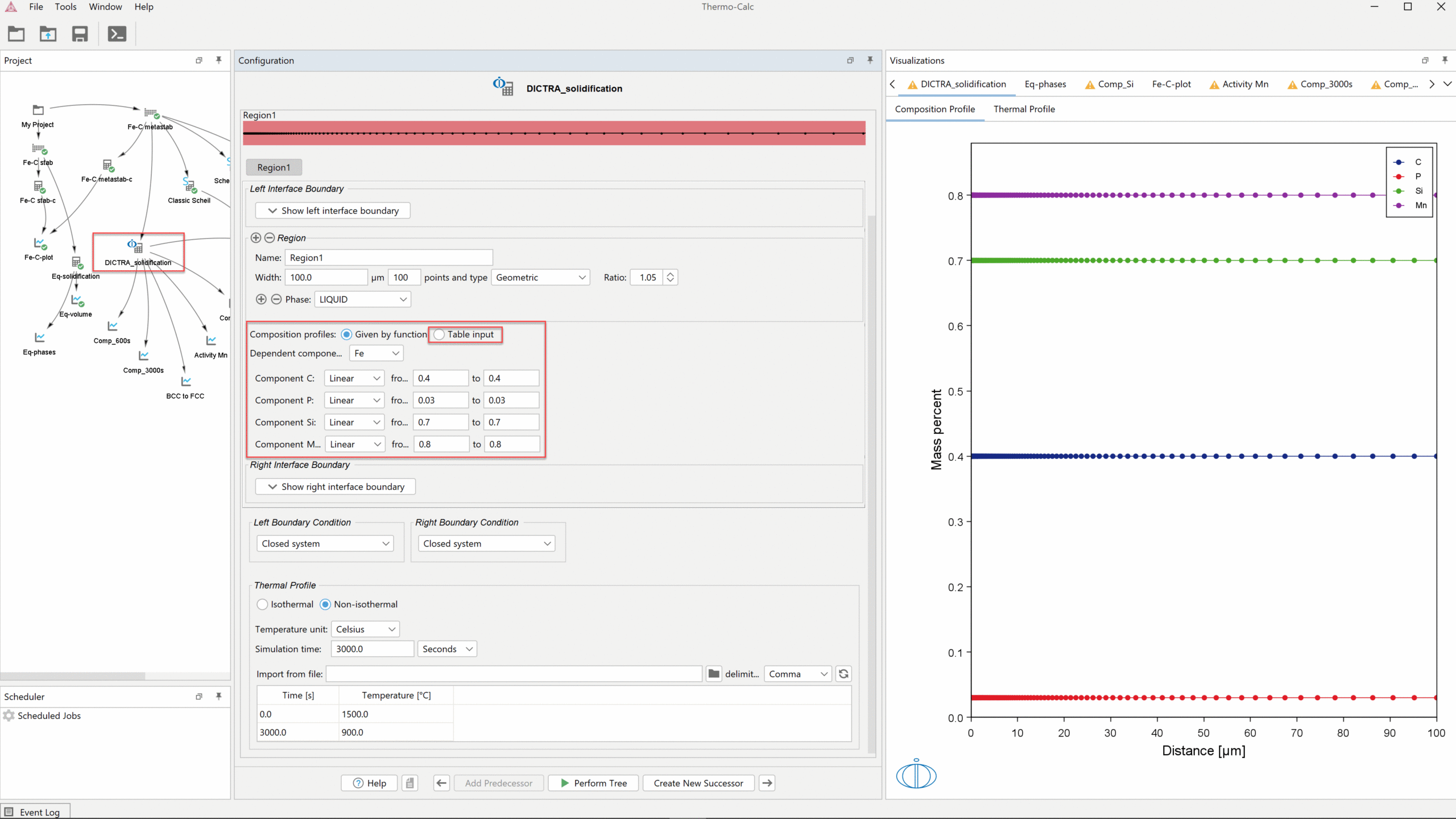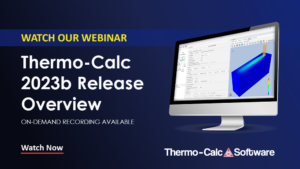Thermo-Calc 2023b Available Now
Update Released
An update to Thermo-Calc 2023b was released on September 6, 2023. If you installed Thermo-Calc 2023b before September 6, you are encouraged to update your software as this update includes critical bug fixes.

The setup and results of a multilayer simulation in the new Additive Manufacturing Module.
All the required thermophysical material properties needed for additive manufacturing simulations are generated directly from Thermo-Calc databases.
The module solves the multiphysics problem of a moving heat source that melts and solidifies metal powder. The multiphysics simulation involves thermal conduction, fluid flow, evaporation-, radiation- and convective- heat loss.

Composition Profile and Thermal Profile settings are now entered directly in the Configuration window and viewed in a tab in the Visualizations window.

Scheil and Diffusion Homogenization Calculations
Four new plot variables are added to the Scheil Calculator in both Console Mode and Graphical Mode:
Precipitation Module (TC-PRISMA)
The Precipitation Module (TC-PRISMA) has received several updates to expand the control users have over the data.

Tests comparing the Process Metallurgy Module in Thermo-Calc 2023a versus Thermo-Calc 2023b show dramatic improvements to stability, especially with kinetic process simulations.
Improvements to the Yield Strength Model
The Yield Strength Model has received several updates in this release.
New Property Model: Solvus for Ordered Phase – Ni
A new Property Model is introduced in the Nickel Model Library – Solvus for Ordered Phase – Ni.
An example has been created demonstrating this new model: PM_Ni_03: Critical_Termperatures_Alloys_718.
Users who have a license for the Nickel Model Library and a valid Maintenance and Support Subscription receive this new model for free.
New and Updated Databases
New Databases
SSUB7: SGTE Substances Database
In this version of the database, there are 3388 condensed stoichiometric compound phases and one huge gaseous mixture phase. It now contains assessed thermochemical data for 5985 substances (3388 condensed compounds and 2597 gaseous species). This is an increase of 200 condensed compounds and 39 gaseous species.
Updated Databases
TCNI12.1: Nickel-based Superalloys Database
The nickel-based superalloys database was updated to version TCNI12.1. Users who have a license for TCNI12 and a valid Maintenance and Support Subscription receive this upgrade for free.
TCTI5.1: Titanium and TiAl-based Alloys Databases
The Ti/TiAl-based alloys database was updated to version TCTI5.1. Users who have a license for TCTI5 and a valid Maintenance and Support Subscription receive this upgrade for free.

